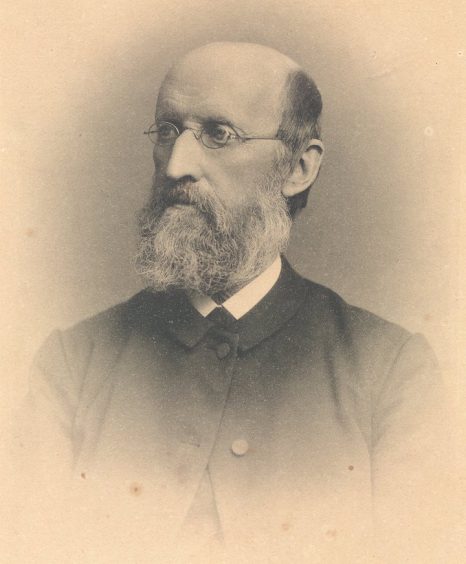Cyrus Hamlin

Rev. Cyrus Hamlin (1811-1900), teacher, missionary, diplomat, and college president, was born in Waterford, ME, January 5, 1811. Until he was ten years old he lived on a farm, attending the common school a few weeks each year. In May, 1829, he went to Bridgton Academy, to prepare for the ministry. He graduated from Bowdoin College in 1834, and while in college exhibited the same mechanical skill and Christian courage which characterized his later life. In his sophomore year he built a steam engine under great difficulties, the first one constructed in Maine. He graduated from Bangor Theological Seminary in 1837. His wish was to go into Central Africa as an explorer, but the American Board of Commissioners for Foreign Missions sent him to Constantinople to establish a high school.
From 1840 till 1860 he was principal of Bebek Seminary; and then became engaged in the work of founding Robert College and securing a building for it. He was Robert College’s first president and continued in this office till 1877. During his residence at Constantinople he showed his great executive power in the successful introduction of industrial activities, especially bread-making, among the persecuted Armenians and in connection with the English hospital at Scutari during the Crimean war.
From 1877 to 1880 he was Professor of Theology in Bangor Theological Seminary. Late in 1880 he was inaugurated President of Middlebury College. With his usual energy he endeavored to bring order out of chaos and start the college upon a new era of prosperity. The library he found in a deplorable condition. The 12,000 volumes, constituting it, were crowded together and almost inaccessible. The geological and botanical specimens were in such crowded quarters that as aids to students they were almost useless. The north end of Painter Hall was unused and President Hamlin proposed by cutting through the four floors of the building and putting in stairways and shelves to form a convenient library. This, with other improvements, President Hamlin thought would cost about $7,000. This was laughed at and his plans opposed by the trustees. Many prophesied that he would involve the institution in debt, but all the improvements were made, new books to the value of $1,000 were put into the library and some new apparatus into the laboratories, the gymnasium was fitted up with considerable apparatus and the stipulated sum was exceeded by only $1.50 which the worthy President paid from his own pocket. Realizing the high living expenses of the students he built the Starr Boarding Hall. This was done and furnished with utensils and furniture with funds contributed by Charles and Egbert Starr. Is it run upon the co-operative plan and has resulted in a great benefit and saving to the students.
The most remarkable event of the administration was the opening of the doors of the class room to women though under some restrictions. This was done at the annual meeting of the trustees in 1883. The first to avail herself of this privilege was Miss May Belle Chellis, who began her work with the class of ’86 and at its head. The standing attained by the first young woman who entered and the continued success of the experiment moved the trustees in 1887 to remove all restrictions and place them on the same footing as the young men. In 1885, after establishing the college again on a firm foundation and bringing harmony out of discord, President Hamlin offered his resignation, realizing that he has arrived at that period of his wonderfully useful life when he could and ought to retire on his well-earned laurels. He retired to Lexington, Massachusetts.